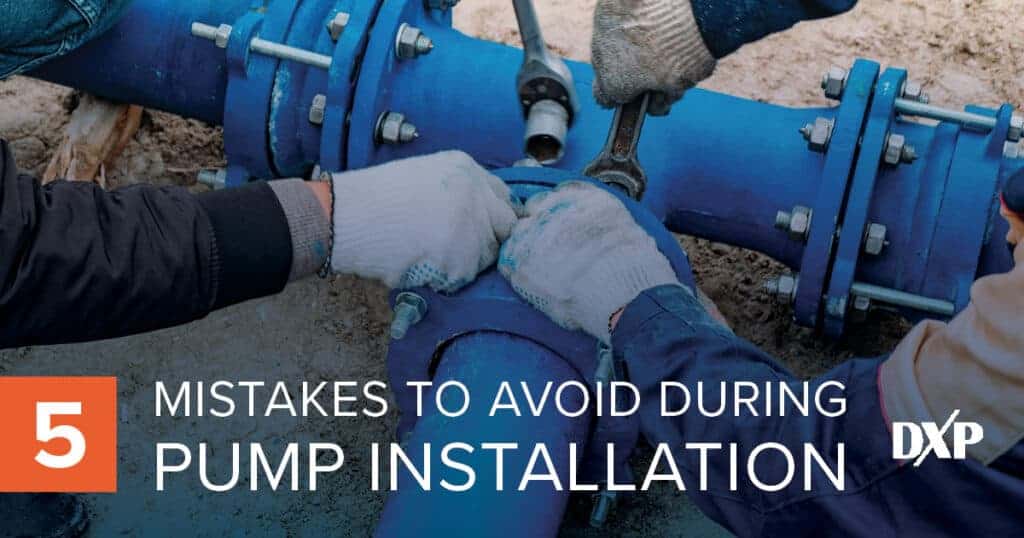Pumps can fail for several reasons. Many failures happen during operation. The equipment can sometimes be at fault. So can the operator, especially when proper maintenance isn’t performed. You have full control of the equipment and can prevent many system failures at one point in the process. We’re talking about pump installation. Taking the right steps during the installation stage can save time, money, and headaches down the line.
Here are some of most costly mistakes to avoid during pump installation:
- Weak Foundation
Successfully mounting a pump begins with the concrete foundation and the baseplate. The foundation needs to be strong. The baseplate should be properly fitted to the equipment. Many stock baseplates need to be modified and adjusted to provide ideal results. The plate then needs to be mounted securely to the foundation, and the equipment should be leveled, aligned, and mounted to the baseplate. The footing of the pump is critical for overall performance and durability.
- Poor Alignment
Shaft alignment is one of the most important steps of pump installation. Sophisticated laser alignment tools can be used to aid with alignment, and an experienced pump engineer will know old-school techniques like double alignment. The goal is to ensure the shaft and piping are perfectly aligned within an acceptable tolerance. If not, there will be trouble in the future.
- Inefficient Piping
This is one of the biggest problems we see when inspecting pump systems installed by someone else. The piping is wrong, ultimately hindering the performance of the pump system. A bad piping design can affect suction, pressure, temperature, and flow rates. This puts added stress on the equipment, which increases the risk of pump failure.
- Not Configuring for the Application
Another common mistake is failing to configure the pump system for the process application. You may have selected the best pump for the job, but it still needs to be dialed in and optimized. You can consider upgrading mechanical seals, bearings, and other vital components based on the process fluid. This is especially true if the fluid is highly corrosive, contains solids, or is hazardous in other ways. All aspects of the pump system design should be configured to provide better pumping performance and extended equipment durability.
- Failing to Inspect and Test the Equipment
Last, you have to put the equipment through its paces before putting it into full production mode. The manufacturer tests most pumps, but things can happen during shipping and unpacking. Parts can become loose, or damage can occur. The pump equipment should be inspected carefully before and during the installation process. Then it must be tested thoroughly before being put into operation. This is how you properly optimize it and ready it to handle your application. Too many operators rush to get a pump into action, only to experience problems later. Take the time up front to help minimize the risk of failure later.
These are some of the most common pump installation mistakes we see at DXP Pacific. To learn more about our professional pump installation and optimization services—along with repairs, training, and maintenance packages—contact us today.

